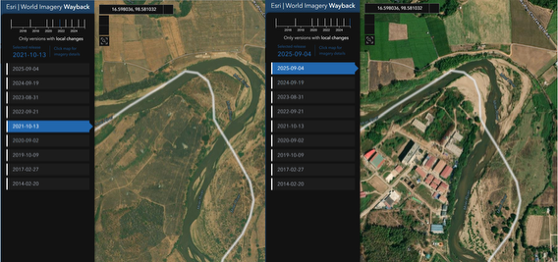On November 25, 2024, FinCEN announced that it had joined a multi-sector national task force dedicated to the prevention of fraud and scams. According to the announcement, the National Task Force on Fraud and Scam Prevention, convened by the Aspen Institute’s Financial Security Program, is bringing together key stakeholders from the public and private sectors to develop a comprehensive national strategy for combating fraud and scams. As part of its role on the Task Force, “FinCEN will participate in specific working groups that will develop recommendations to include in the Task Force’s national strategy to combat fraud through cross-sector collaboration and ‘whole-of-government’ support.”
While it is commendable that FinCEN would join this private sector-led initiative, I continue to believe that the federal government needs to exert leadership in this area.
There are already numerous private sector initiatives to combat fraud. But the federal government is the one with the resources and power to bring together all of the relevant parties in this area and coordinate their efforts.
It is time for the federal government to take charge in the war against fraud. But how would this be done?
Is a Fraud Czar the answer?
My first thought on how the federal government should assert leadership is through the designation of a Fraud Czar, similar to the way that the Drug Czar was intended to lead the War on Drugs. However, after doing some research, I found that this would probably not be a productive idea. There are two ways to institute a Czar in the federal government. First, it can be done through the legislative process. This is how the Office of National Drug Control Policy was created by the Anti-Drug Abuse Act 1988. The benefit of implementing this position through the legislative process is that it will come with a budget and a blueprint.
However, there are several downsides to this process. First, this would take time because it would have to go through the very unpredictable and slow legislative process. Second, it would create a permanent bureaucracy that may not be necessary nor effective. Third, the fact that a bureau is set up to coordinate anti-drug policy does not mean it will be able to do so. For example, ideally the Drug Czar would be able to coordinate the anti-drug efforts of the federal law enforcement agencies. In reality, this is very difficult to do and, in my estimation, this attempt at coordination has not been effective.
Is a National Anti-Fraud Strategy the answer?
While it is commendable that the Aspen Institute Task Force intends to develop a national strategy to combat fraud and scams, a strategy coming from the private sector will not have sufficient authority to implement a strategy. Moreover, the United States already has a strategy document pertaining to financial crime: the 2024 National Strategy for Combating Terrorist and Other Illicit Financing published by the Treasury Department.
While a National Strategy is always a good idea to address a problem, this annual document has several shortcomings. First and foremost, this document does not carry any authority. It is a recitation of past accomplishments, current risks, and future goals. It does not direct nor commit any federal agency to take any specific actions. If a National Anti-Fraud Strategy were to be published, either by the government or by the private sector, it would likewise not carry any authority.
It is certainly a good idea to combine all of the relevant information pertaining to the fraud crisis in the United States in one place. And, while it might recommend a blueprint on how the nation’s resources should be coordinated to address this situation, it would not have any impact on current practices.
Is a Federal Task Force the answer?
Upon further reflection, my mind went back to the savings and loan crisis that took place in the 1980s when I was a young attorney in the Criminal Division of the US Department of Justice (I realize that I’m dating myself here.) I remember taking a call from an Assistant United States Attorney in Texas who told me that a large number of condominiums were being built in Texas and they were all empty, but they were being sold on a regular basis for ever-escalating prices. Most of these were being financed by loans from small banks that involved rampant fraud and self-dealing.
The crisis he was warning me about came to pass. At the end of the day, the federal regulators closed 1,043 banks that held $519 billion in assets. The total cost to taxpayers by the end of 1999 was $123.8 billion with an additional $29.1 billion of losses imposed onto the thrift industry.
The reason I thought back to the S&L crisis is that the government’s response was very effective. While additional funding for prosecutors and investigators was provided by the Financial Institutions Reform, Recovery, and Enforcement Act of 1989 (FIRREA), most of the work in investigating and prosecuting the perpetrators of the frauds was done by the Department of Justice and the FBI – without developing a new agency or bureaucracy.
In August 1987, the Justice Department established the Dallas Bank Fraud Task Force using existing Criminal to Division resources and the resources of other agencies to supplement the work of the U.S. Attorney’s Office in Dallas. The Task Force was directed by the Justice Department’s Fraud Section. Between August 1987 and June 1990, the Dallas Bank Fraud Task Force brought charges against 77 defendants and obtained convictions of 54 defendants. As of June 1990, the Task Force had 42 separate financial institutions under investigation; these investigations involved 560 suspects. Further, on December 7, 1989, the Attorney General announced a plan to establish similar task forces in 27 cities across the country for investigating and prosecuting financial institution fraud.
More recently, in November 2009, the President created the Financial Fraud Enforcement Task Force by Executive Order in order to address fraud in connection with the subprime mortgage crisis of 2008. This task force, which was chaired by the Attorney General, was composed of more than 25 federal agencies, regulators and inspectors general, as well as state and local partners. The Executive Order directed the Task Force to use the full criminal and civil enforcement resources of the member departments and agencies:
(1) to investigate and prosecute financial crimes and other violations relating to the current financial crisis and economic recovery efforts;
(2) to recover the proceeds for such crimes and violations;
(3) to address discrimination in the lending and financial markets;
(4) to enhance coordination and cooperation among federal, state and local authorities responsible for the investigation and prosecution of financial crimes and violations; and
(5) to conduct outreach to the public, victims, financial institutions, non-profit organizations, state and local governments and agencies, and other interested partners to enhance detection and prevention of financial fraud schemes.
Further, the task force developed a comprehensive enforcement network by establishing Financial Fraud Coordinators in every U.S. Attorney’s Office in the country to coordinate Task Force efforts at the line level.
While this financial crisis was very complex and resulted from a variety of economic factors in addition to possible fraud, it demonstrated that a federal task force can be created by an Executive Order without creating a new bureaucracy. A national task force can be established to address a national emergency simply by providing coordination of efforts and priorities under the Attorney General. While the Attorney General does not have the power to command other agencies outside of the Department of Justice, the Department of Justice is the agency that determines how and when federal crimes should be prosecuted. So, the Attorney General has significant power to impact the priorities and resources of non-department federal agencies.
A UK example of government leadership
In May 2023, the UK unveiled its first national Fraud Strategy and implemented a number of steps that would be taken to more effectively combat fraud. The government established the position of Anti-Fraud Champion, and appointed Anthony Browne, a member of Parliament, as the first Champion. The Anti-Fraud Champion’s remit is to drive the government’s efforts to tackle fraud against individuals and businesses and support delivery of the Fraud Strategy, including working with industry to secure collaboration, engage with international counterparts to tackle fraud, and coordinate cross-government efforts to cut fraud.
The UK government also announced the formation of a new National Fraud Squad with 400 new specialist investigators. In November 2023, the UK government joined forces with leading tech companies – Amazon, eBay, Facebook, Google, Instagram, LinkedIn, Match Group, Microsoft, Snapchat, TikTok, X (Twitter) and YouTube – to develop and commit to the Online Fraud Charter, the first agreement of its kind in the world.
More recently, the UK government took another step to demonstrate leadership in the counter-fraud area. On November 22, 2024, the UK’s Information Commissioner’s Office (ICO), issued a call for “organizations to share personal information responsibly to protect their customers from frauds and scams.” The ICO noted that fraud is the most frequently experienced crime in the UK, “accounting for 39% of all reported crime in England and Wales.” In conjunction with International Fraud Awareness Week, the ICO published new practical advice to provide clarity on data protection considerations and support organizations to share data responsibly to tackle scams and fraud. This kind of leadership at the national level is very helpful in bringing together the public and private sectors to combat fraud.
Final thoughts
I began this exercise believing that we need national coordination by the federal government to more effectively address the fraud crisis that is causing uncountable losses and suffering to people in the United States and around the world. After considering possible ways for the federal government to step into the void and take command of this situation, I believe that the most effective and direct way to do this would be to create a National Counter-Fraud Task Force under the direction of the Attorney General. The blueprint for this task force exists. Moreover, while such a task force could assist in coordinating federal, state, and local resources, I can guarantee that companies in private industry would be ready, willing, and able to participate in such a coordinated offensive. It is time to put this plan into action and have a commander to lead the war against fraud.



